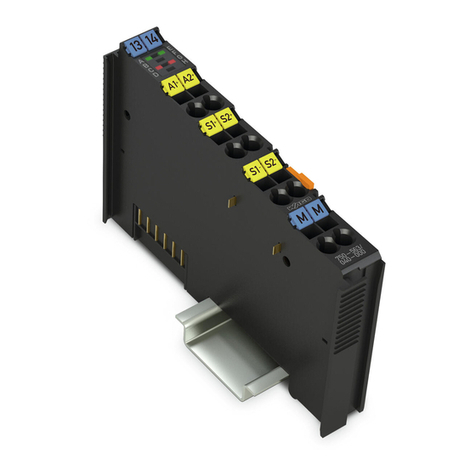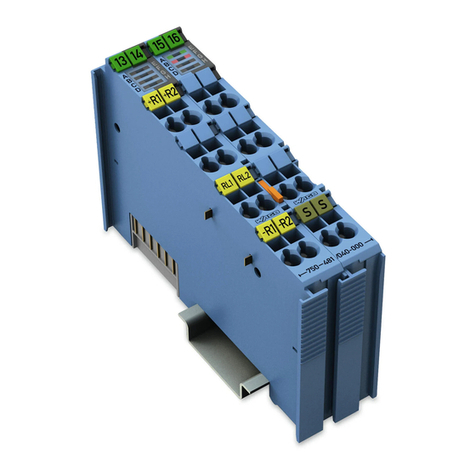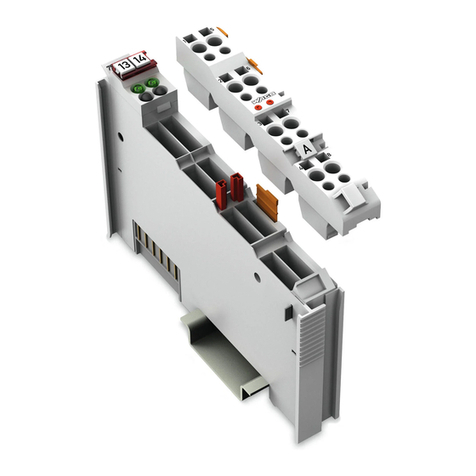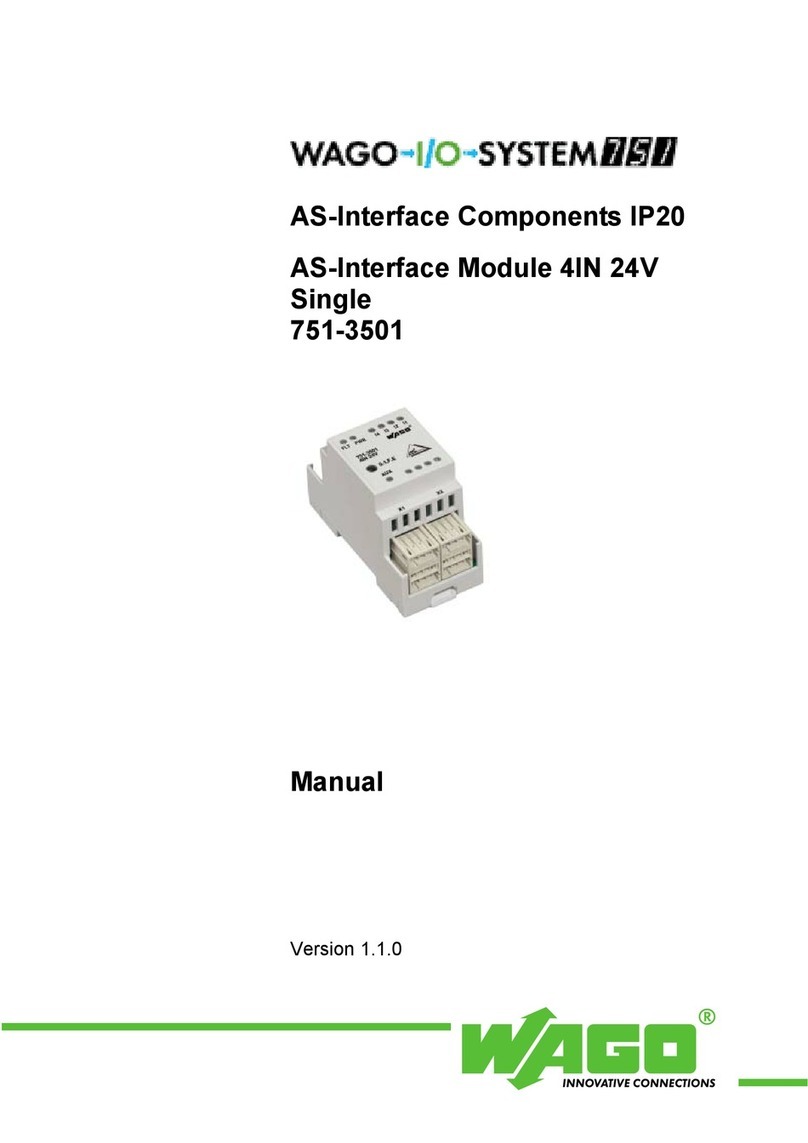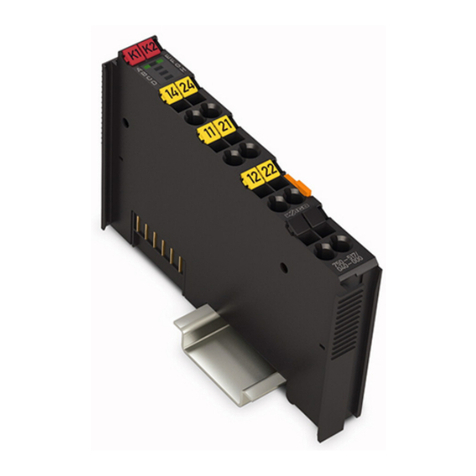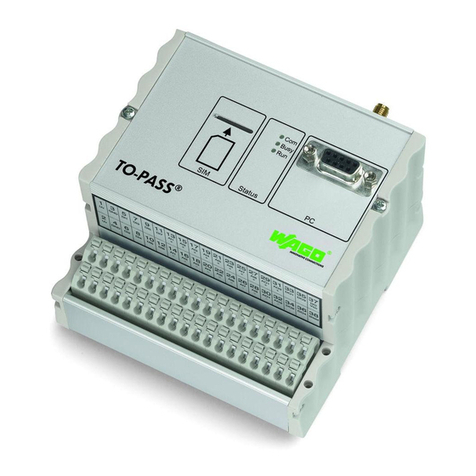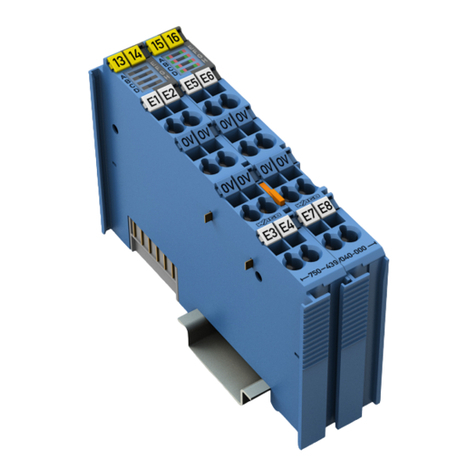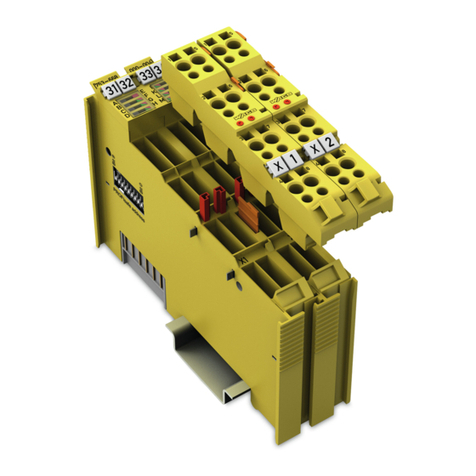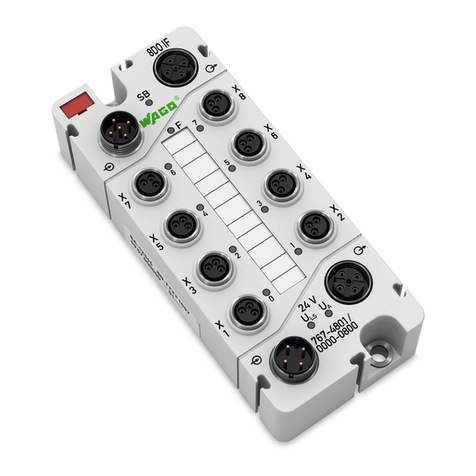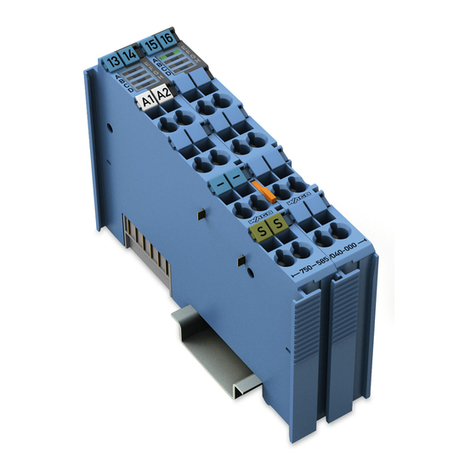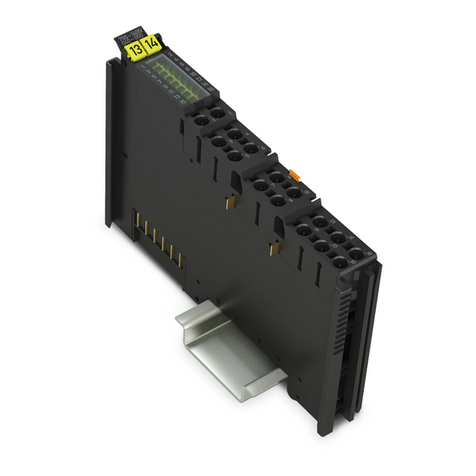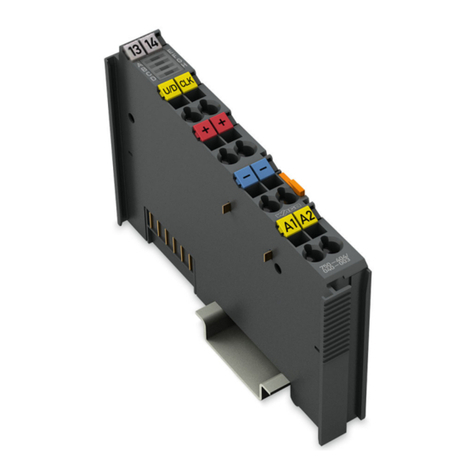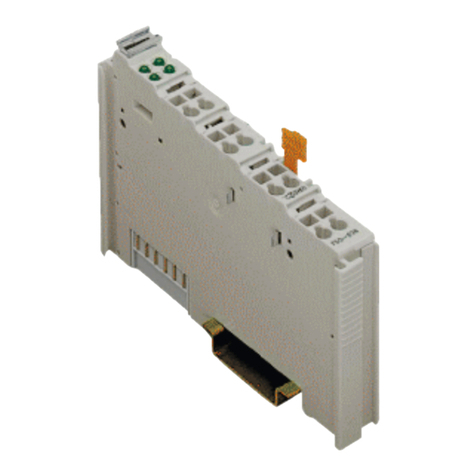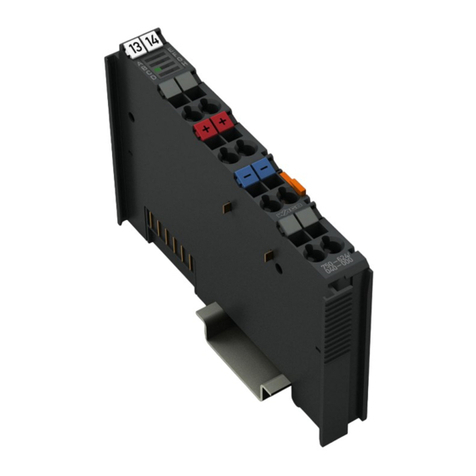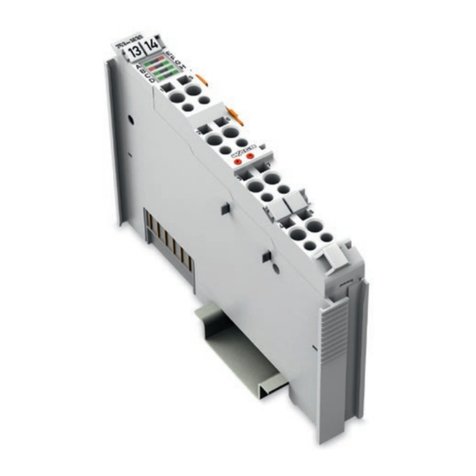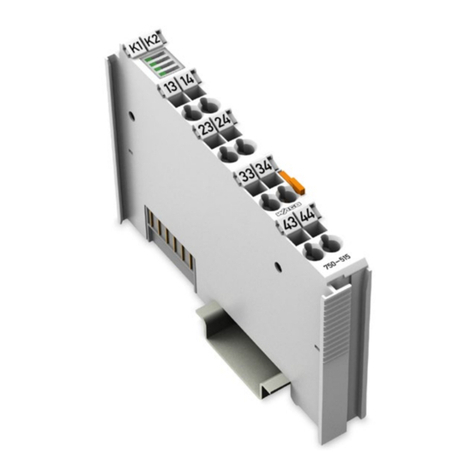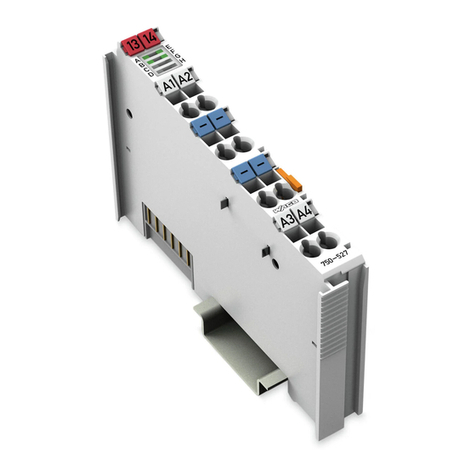
WAGO-I/O-SYSTEM 750 Table of Contents 3
750-528 4DO 30V AC/DC 2.0A SSR Isolated
Manual
Version 1.0.0
Table of Contents
1Notes about this Documentation .............................................................5
1.1 Validity of this Documentation.................................................................5
1.2 Copyright................................................................................................5
1.3 Symbols .................................................................................................6
1.4 Number Notation ....................................................................................8
1.5 Font Conventions ...................................................................................8
2Important Notes ........................................................................................9
2.1 Legal Bases............................................................................................9
2.1.1 Subject to Changes............................................................................9
2.1.2 Personnel Qualifications ....................................................................9
2.1.3 Use of the 750 Series in Compliance with Underlying Provisions.......9
2.1.4 Technical Condition of Specified Devices.........................................10
2.2 Safety Advice (Precautions) .................................................................11
3Device Description..................................................................................15
3.1 View .....................................................................................................16
3.2 Connectors ...........................................................................................17
3.2.1 Data Contacts/Local Bus..................................................................17
3.2.2 Power Jumper Contacts/Field Supply ..............................................18
3.2.3 CAGE CLAMP®Connectors.............................................................20
3.3 Display Elements..................................................................................21
3.4 Schematic Diagram ..............................................................................21
3.5 Technical Data .....................................................................................22
3.5.1 Device Data .....................................................................................22
3.5.2 Digital Outputs .................................................................................22
3.5.3 Field Supply .....................................................................................23
3.5.4 Local Bus Supply .............................................................................23
3.5.5Isolation ...........................................................................................23
3.5.6 Communication................................................................................23
3.5.7 Connection Type..............................................................................23
3.6 Environmental Conditions.....................................................................24
3.7 Approvals .............................................................................................25
3.8 Standards and Guidelines ....................................................................26
4Process Image.........................................................................................27
5Mounting..................................................................................................28
5.1 Mounting Sequence..............................................................................29
5.2 Inserting and Removing Devices ..........................................................30
5.2.1 Inserting the I/O Module...................................................................30
5.2.2 Removing the I/O Module ................................................................31
6Connect Devices .....................................................................................32
6.1 Connecting a Conductor to the CAGE CLAMP®...................................32
6.2 Power Supply Concept .........................................................................33
6.2.1 Power Supply for Voltage Ranges up to 31.2 VDC...........................33
6.2.2 Power Supply for AC Voltage (up to 30 VAC) or DC Voltage
above 31.2 V (up to 48 VDC)............................................................34
